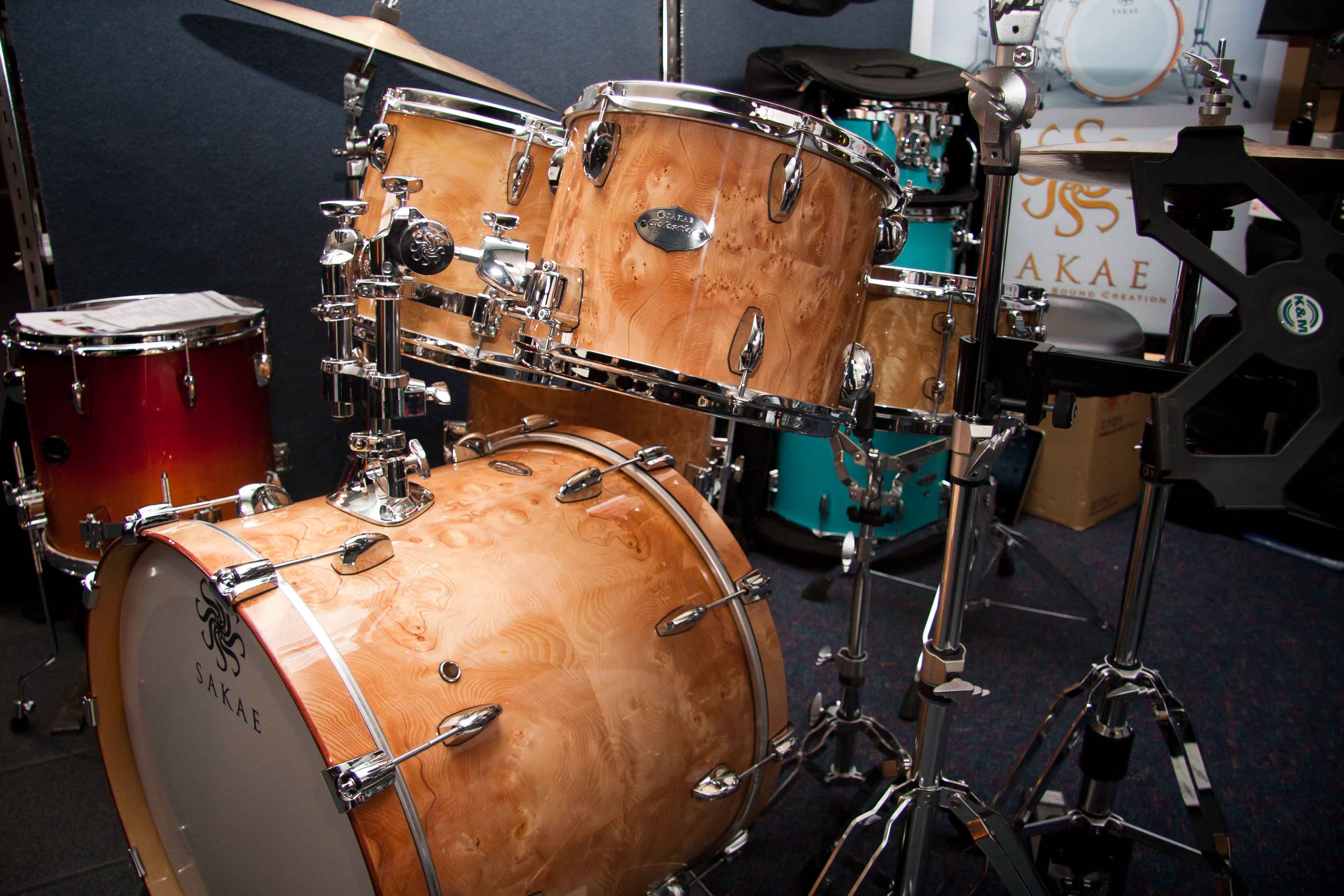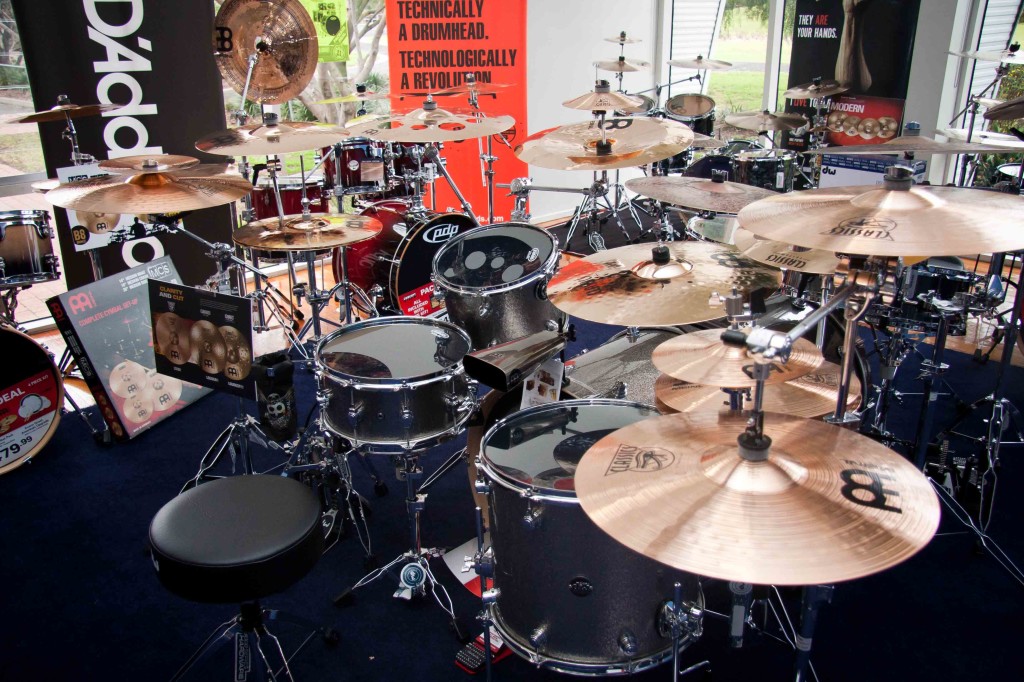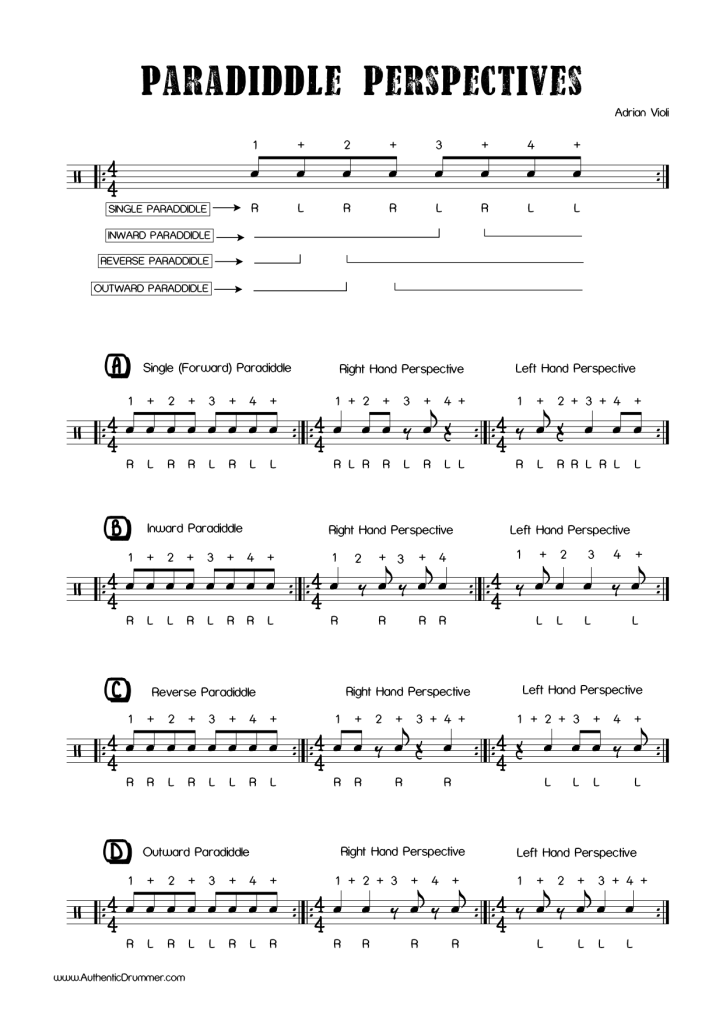
Thought I’d share a little concept with you about a strategy of learning the ‘other paradiddles’ better. That’s right – if you’re looking puzzled – there are multiple paradiddles and each of them have great possibilities for use on the drums.
Now, to clarify, I’m not talking about the other two paradiddles that are part of the 40 international rudiments. These are the Double Paradiddle (RLRLRR LRLRLL) and the Triple Paradiddle (RLRLRLRR LRLRLRLL). Whilst these are also incredibly useful, I’m actually talking about three other permutations or ‘shifted’ variations of the single paradiddle (RLRR LRLL).
These ‘other’ paradiddles are the called the INWARD, REVERSE and OUTWARD paradiddles and the names actually make sense when you analyse the stickings.
Looking at the figures below we have a diagram of the single paradiddle and how the other three paradiddles are formed from this. You’ll see that the Inward Paradiddle starts on beat 3+ and plays through as normal from that spot giving us – RLLR LRRL with the ‘diddle’ on the inside of each half of the stickings. The Reverse Paradiddle begins on beat 2 and gives us RRLR LLRL with the ‘diddle’ the exact reverse of where it normally is. Finally, the Outward Paradiddle starts on beat 2+ and we end up with RLRL LRLR where the ‘diddle’ is split up on the outside of each of the stickings.
If you’re like me, you may find it difficult to get your hands to be comfortable with playing these other variations like you normally would the standard Paradiddle. This method of ‘perspectives’ can combat that. You actually look at what each hand is playing individually, listen to the rhythm coming back at you, lock into the groove and get your other hand to ‘fill in the gaps’. It’s a little hard to get the hang of at the start but if you think about it, it can make sense.
To get the left hand to simply fill in around the other notes, it has to almost work on autopilot. Think about this – when you’re playing a rock beat, you don’t really think a whole lot about your hi-hat do you? You’re thinking about the bass drum pattern or maybe the sixteenth notes on the snare etc. The hi-hat is just conditioned to keep playing no matter what. In the same way, you can get your right hand to play the ‘right hand perspective’ of a paradiddle and slip the left hand in there to fill the missing notes – on autopilot.
Looking at figure A, we have the Single Paradiddle. The two bars that follow are the two other perspectives – Right hand only and Left hand only. I’ve written them like this so that you can see and subsequently hear the rhythms that occur. As you play around with this concept, you’ll notice that each of the paradiddles has a distinct flavour and feel in the rhythms of each perspective. This is what makes each one suited to different applications, as you’ll inevitably discover.
As I mentioned, this may take a little time but these paradiddles are really worth looking at. When each one is comfortable, it’s then time for accents. But that’s another lesson.



Leave a reply